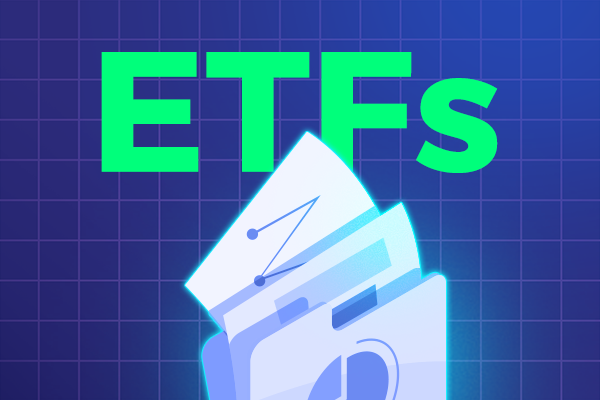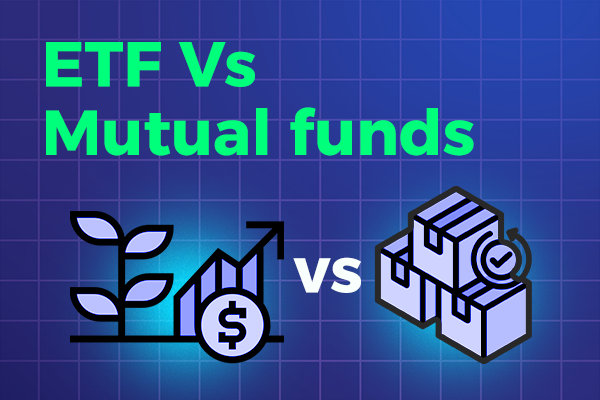How Do ETFs Work?
Exchange-traded funds (ETFs) have gained immense popularity among investors in recent years. These investment vehicles offer a simple and cost-effective way to gain exposure to a wide range of asset classes, including stocks, bonds, and commodities.
ETFs are similar to mutual funds; however, they trade on stock exchanges like individual stocks. ETFs are typically passively managed, which means they aim to replicate the performance of a specific market index, such as the S&P 500 or the Dow Jones Industrial Average.
Key Takeaways
- ETFs are a popular investment option that offer exposure to a wide range of asset classes.
- ETFs are exchange-traded and typically passively managed.
- ETFs aim to replicate the performance of a specific market index.
Understanding ETF Structure and Mechanics
Exchange-traded funds (ETFs) are investment vehicles that pool money from multiple investors to buy securities such as stocks, bonds, or commodities. ETFs are traded on exchanges, just like individual stocks, and their prices fluctuate throughout the trading day.
ETFs are created and managed by investment companies. To create an ETF, the investment company assembles a portfolio of securities that seeks to track a specific market index or asset class. The investment company then issues shares of the ETF to investors in exchange for cash or in-kind transfers of securities.
Authorized Participants and ETFs
Authorized participants (APs) play a crucial role in the creation and redemption of ETF shares. APs are typically large financial institutions that have the capability to create or redeem ETF shares in large blocks of 50,000 units or more. APs purchase the underlying securities of an ETF portfolio and then exchange those securities for new shares of the ETF. This process allows ETFs to maintain a stable share price that closely tracks the value of the underlying securities.
Types of ETFs
There are two main types of ETFs: index-based ETFs and actively managed ETFs. Index-based ETFs seek to track the performance of a specific market index, such as the S&P 500 or the NASDAQ. Actively managed ETFs, on the other hand, are managed by portfolio managers who aim to outperform the market by selecting specific securities based on their own investment strategies.
ETF Strategies
ETFs use a variety of strategies to track specific market indices or asset classes. Some ETFs use a full replication strategy, which involves holding all of the securities in the underlying index in the same proportions as the index. Other ETFs use a sampling strategy, which involves holding a representative sample of the securities in the underlying index. This strategy is often used for indices with a large number of securities or illiquid securities.
ETFs can also use a synthetic replication strategy, which involves entering into swap agreements with financial institutions to replicate the performance of the underlying index. This strategy allows ETFs to track indices that are otherwise difficult to replicate using physical holdings.
Benefits of Investing in ETFs
Exchange-traded funds (ETFs) have become increasingly popular among investors in recent years due to the numerous benefits they offer. Below are some advantages of investing in ETFs:
- Diversification: ETFs provide access to a diversified basket of securities, which helps reduce investment risk.
- Liquidity: ETFs can be bought and sold on major stock exchanges, providing investors with easy access to their investments and the ability to quickly adjust their portfolios.
- Transparency: ETFs are required to disclose their holdings regularly, giving investors full transparency over their investments.
- Cost-effective: ETFs generally have lower expense ratios compared to mutual funds, making them a cost-effective investment option.
- Flexibility: ETFs can be used to gain exposure to various asset classes and investment strategies, making them a versatile investment option for investors with different objectives and risk tolerance levels.
However, it is important to note that ETFs come with their own set of risks and disadvantages. Investors should carefully consider their investment goals and risk tolerance before investing in ETFs.
Risks and Disadvantages of ETFs
While exchange-traded funds (ETFs) offer many benefits, they also come with potential risks and disadvantages that investors should be aware of before investing. Here are some of the key risks:
Market Volatility
ETFs can be subject to market volatility, just like any other investment. When the market experiences a downturn, ETF prices can fall, leading to losses for investors. Investors should be prepared for this risk and ensure that their investment portfolio is diversified enough to weather market fluctuations.
Tracking Errors
ETFs aim to track a specific market index or asset class, but tracking errors can occur. This means that the ETF may not accurately reflect the performance of the underlying index or asset. Investors should pay close attention to the tracking error of their ETFs to ensure that they are getting the expected returns.
Liquidity Issues
While ETFs are generally considered liquid investments, there can be liquidity issues during times of market stress. If there are many sellers in the market and few buyers, it may be difficult to sell ETF shares at the desired price. This can lead to losses for investors who need to sell their shares quickly.
It is important to note that these risks are not unique to ETFs and are present in all types of investments. However, investors should be aware of these potential downsides and ensure that they understand the risks before investing in ETFs.
Evaluating ETF Performance
When evaluating ETF performance, there are several key metrics to consider. These include expense ratios, tracking error, and historical returns.
An expense ratio is the cost of owning an ETF, expressed as a percentage of the fund’s assets. It includes management fees, administrative expenses, and other costs. When comparing ETFs, it’s important to look for those with low expense ratios, as these can have a significant impact on returns over time.
Tracking error is the difference between an ETF’s performance and the performance of the benchmark it tracks. It can occur due to factors such as fees, trading costs, and portfolio composition. It’s important to look for ETFs with low tracking error, as this indicates that they are closely aligned with their benchmarks.
Historical returns are another important metric to consider when evaluating ETF performance. This provides an indication of how the ETF has performed over time, although past performance is not always indicative of future results. When comparing historical returns, it’s important to consider the time period being analyzed and the benchmark being used for comparison.
Conclusion
ETFs have become increasingly popular among investors due to their flexibility, diversification, and lower costs compared to traditional mutual funds. Before investing in ETFs, it is important to understand their structure and mechanics, as well as the potential risks and benefits.
While ETFs can offer advantages such as liquidity and transparency, they also come with some risks, including market volatility and tracking errors. It is important to evaluate ETF performance by considering factors such as expense ratios and historical returns when selecting the best ETFs for specific investment goals.
In summary, ETFs provide a unique opportunity for investors to gain exposure to a wide range of market indices and assets with lower costs and more flexibility. However, investors should carefully consider their investment objectives and risk tolerance before investing in ETFs. By understanding the underlying mechanics and analyzing ETF performance, investors can make informed investment decisions to achieve their financial goals.

